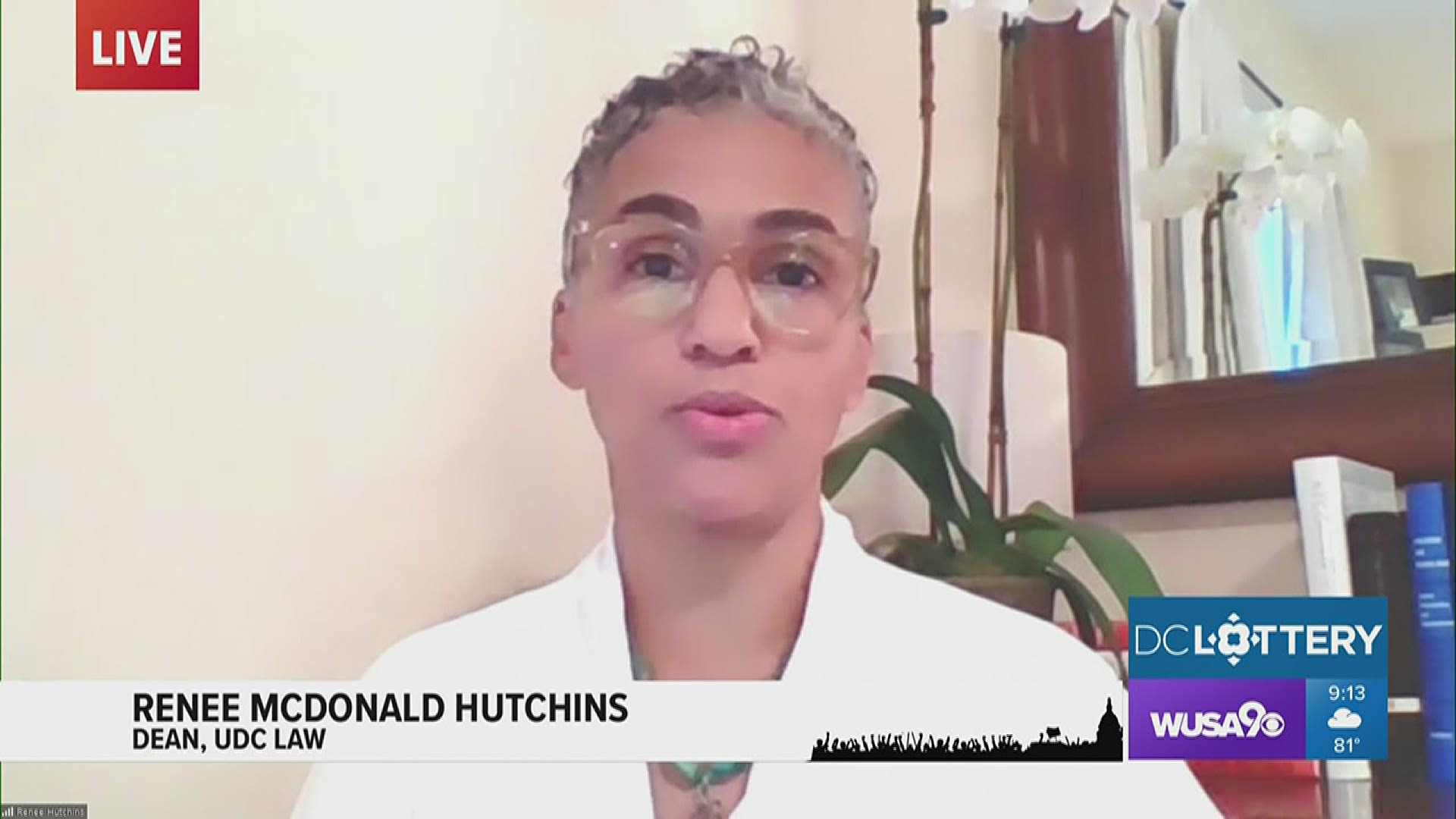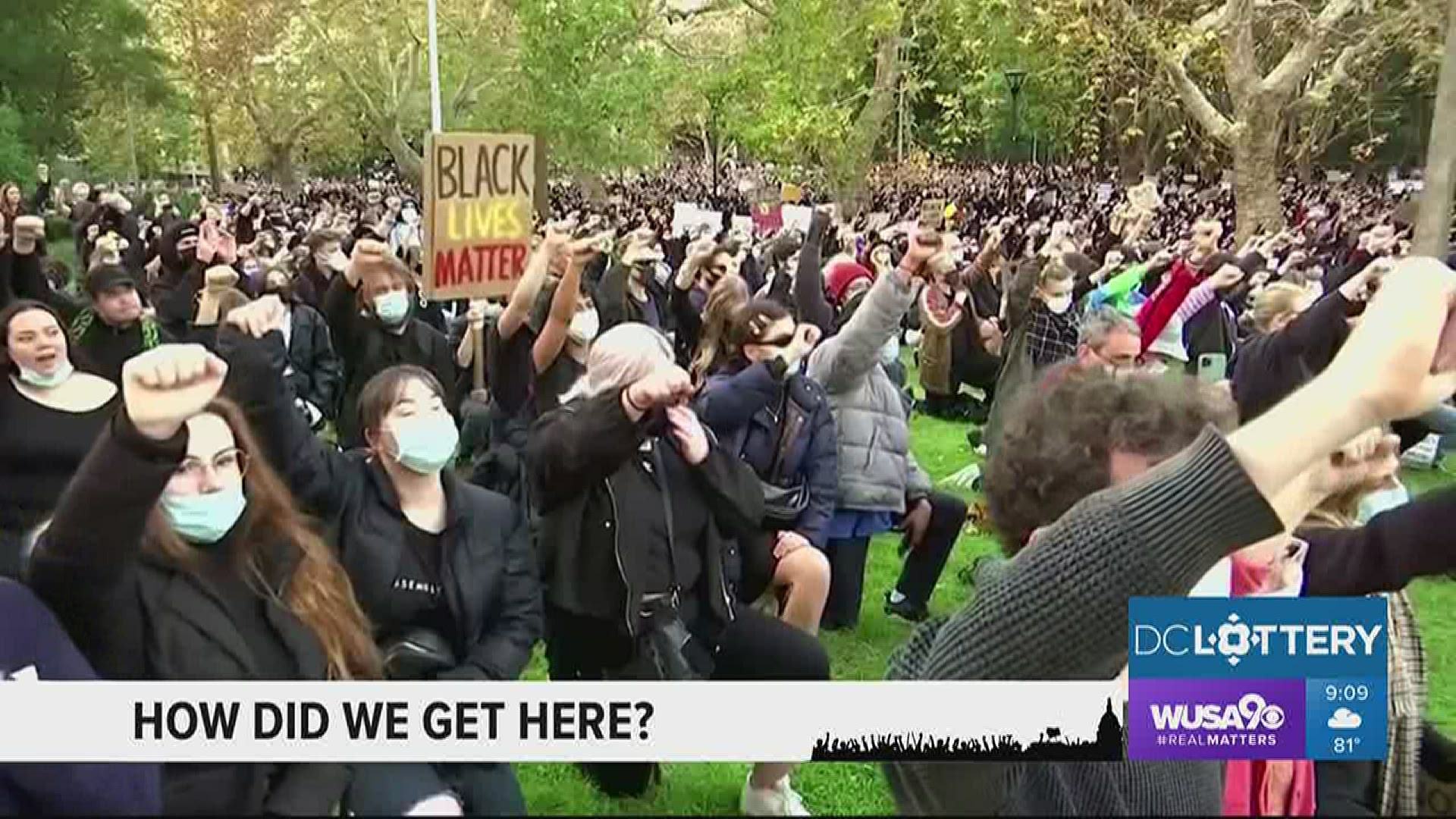WASHINGTON — Just after Memorial Day, disturbing video footage of George Floyd's deadly encounter with Minneapolis police began circulating online. Millions watched as former officer Derek Chauvin pressed his knee to Floyd's neck for 8 minutes and 46 seconds, while a handcuffed Floyd begged him to remove it, until his body went limp.
What followed was a near-immediate outcry and months of protests all across the country, from Minneapolis to Seattle and Washington, D.C. Now, 57 years to the day from the 1963 March on Washington, thousands have descended upon the nation's capital to once again proclaim a desire for racial justice.
From a hashtag to a worldwide movement in the middle of a pandemic, WUSA9 asked the dean of UDC Law School, Renée McDonald Hutchins, how did we get here, and why is now the time for this movement?
"I think it's a conflation of a lot of separate events," Hutchins said. "We had this moment where the violence against black and brown people in this country collided with a pandemic that had people at home watching television. So there was this moment where that violence coupled with this captive audience gave birth to a movement that we are seeing play out in the streets right now."
But is this more than a moment, where real change can happen?
"The young people who are out in the streets right now give us all energy," Hutchins said. "For a lot of people who have been in this fight for years and years and years, there’s a sense of exhaustion, a sense of we’ve been here before. But we see what the young people are doing, the sustained protests, out in the streets despite the pandemic, and they want their voices to be heard. They are creating coalitions across races, across genders ... so we're seeing so many movements coalescing around this real craving for justice."
History has shown that in America, we have to bear witness to something to move. During the civil rights era, graphic images of African Americans standing and being brutalized by police moved Martin Luther King Jr. to share the dream he had for his four little children. A dream that they would one day live in a world where their character, not the color of their skin, was the basis for judgment.
Fifty-seven years later, his oldest living child will take to the same steps where his father proclaimed that dream in front of a quarter of a million people, to ask why that dream has not yet been realized. Why decades later is America still bearing witness to violence perpetrated on Black lives?
"It is very easy if we can treat the violence that is happening as something that is happening against the other," Hutchins said. "We can dehumanize it, if we can decouple it from our own existence. But when we are forced to bear witness to it, it is much harder to ignore."


